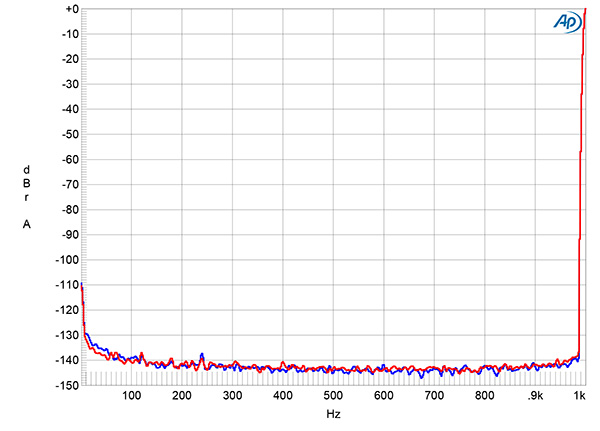THanks but I am puzzled on your finding’s relation to the acquisition of Roon by Harman?
To recap, Anup seemed to imply that the new music server released by Roon under Harman ownership didn’t matter in terms of sound quality because he feels audio over ethernet all sounds the same. I just happen to disagree.
I expect the release of new Roon music servers at the new price points is very much related to the acquisition by Harman, which is a good thing. But I doubt they sound the same as a K50, for example.
Jeremy, I’m sure you heard what you heard, but it could be due to any number of cognitive influences - both in favour of your own thought process or otherwise - which have nothing to do with the Roon/Server itself.
With physical connections assuredly isolated (for example with Ethernet over fiber), and all else being equal, it’s trivially easy to prove beyond all doubt that a Roon Sever is equally transparent against any other server hardware/software.
Once bit-perfect IP/Ethernet streaming transport is achieved, it’s impossible to “improve” it any further! (Unless you’re talking about applying some digital signal processing to the original bit stream).
If Roon (on any server) didn’t have absolute bit transparency, many things would break, including FLAC, DoP, MQA streaming. Likewise any of the bit-perfect-test capable DACs like RME, MSB, etc. they would all fail with Roon.
Anup, my argument has always been that the bitstream can be perfect, but that doesn’t prevent noise entering the DAC through the same interface (although, as I’ve said before, the dCS equipment seems to be far more immune to this than other equipment).
The fact that I’m not the only one finding this and that Hi-Fi manufacturers such as Meridian have admitted they felt they needed to improve on this, suggests there is more to this than just a perfect bitstream. The concept of induced noise into electrical systems isn’t new.
At the risk of repeating myself, I will say again that I’m NOT arguing about the bit transparency, only the induced noise.
Once a Server is properly isolated with fiber, what noise do you think is going to enter the DAC that makes one server different from another?
If noise is the argument for why things sound different between Servers, I’m afraid that argument falls quite flat with $100 fiber media converters.
I absolutely agree that optical fibre should eliminate this noise (although, I don’t think we can rule out that a fibre media convertor could still inject its own electrical noise on the copper side of the interface).
Sure, but that is absolutely not related to the Server at the other end of the fibre.
For PAR’s benefit, I suspect we are now heading OT(!), but given a decent optical solution, I agree the server should become irrelevant.
I’m not entering the duel so to say ; )
I will simply add that MSB Reference and Select attempt to solve the aforementioned noise problems through what appears to be good architectural decisions:
(a) separate power supply; and
(b) Proprietary Pro-USB optical connection which addresses the aforementioned Ethernet problem (real or perceived).
Also not mentioned, MSB (and everyone other major DAC maker at this point) offers native DSD256 playback.
Architecturally, it’s just a copy of what dCS did with the Vivaldi by separating the streaming function from the DAC. The only difference being dCS uses standards-based AES interface between boxes, while MSB uses a completely proprietary optical USB connection.
Do we really need an optical interface between them? I suspect you will be very surprised if you actually measure the AES interface between a Vivaldi Upsampler and the Vivaldi DAC; Here’s a hint: Noise floor that’s a 100 times lower than your hearing threashold ![]() :
:
Fig.8 dCS Vivaldi Apex, balanced output, spectrum with noise and spuriae of dithered 1kHz tone at 0dBFS with 24-bit data (left blue, right red) (20dB/vertical div.).

I would say “partially similar,” versus “just a copy,” because as you know MSB units from the Reference up always have a separate power supply and no external clock.
Thank you for sharing the interesting point re: AES. I don’t have the technical knowledge to know if one is better than the other. In the literature MSB points to the ability to do very long runs with the optical (“up to 1km” !?). That isn’t important for my use case. Either way I think these are interesting ideas:
(a) Isolate power noise from the DAC through a separate box and proprietary connection;
(b) Isolate network noise from the DAC via proprietary optical connection;
(c) Co-locate DAC and a highly accurate clock inside the same box
I’ve been a committed dCS user for almost 20 years now and don’t have plans to change, I just think the MSB approach also has merit.
My only gripe with my Rossini is the lack of DSD256, which every high end DAC on the market now offers… : /
Please can we get this thread back on topic? This stuff may be interesting but power supplies have nothing to do with the takeover of Roon by Harman.
I am happy to Pete ; )
Per below, I continue to believe that Roon is doing the right thing with respect to its customers, and that the Harman acquisition continues to be–so far–a positive development:
I agree, so far this is working out really well